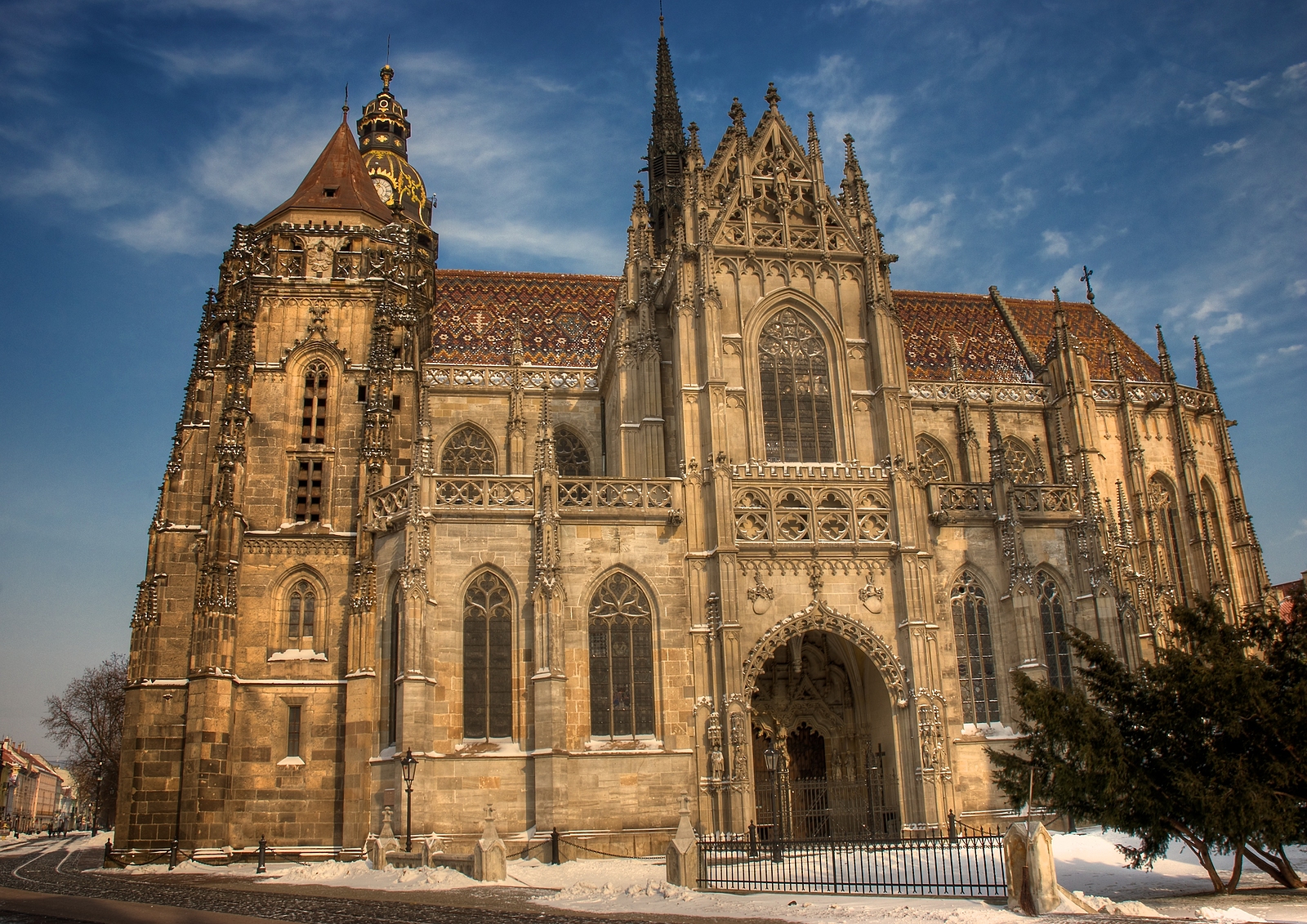
The main city of eastern Slovakia and the country’s second largest city (population roughly 250,000) offers a wider selection of services than anywhere outside of Bratislava.
Its economy is mainly industrial, but its physical centre is the attractive and extensive old town, gathered around a pedestrian high street and town square.
Come and enjoy the ongoing music, theater & art events, historical places and artistic interventions in public spaces and suck up the vibrant energy of Kosice! Kosice became European Capital of Culture in 2013.
Attractions
Most of Kosice’s wide selection of restaurants are on the square (usually with pleasant outdoor sections in summer) or within easy walking distance, and a variety of hotels is located throughout town.
Attractions in Kosice focus around the pedestrians-only main square, one of Slovakia’s liveliest. The epicentre is the gothic Cathedral of St Elizabeth, and its neighbour the empire-era State Theatre, home to opera and ballet. Theatrical performances in Slovak, Hungarian and Roma languages, or by puppets, are all in the vicinity. The city’s museums concentrate on historical aspects of art, culture and technology, and most of them are walking distance from the main square. Beneath the square itself lies more to see: extensive excavations have unveiled unique remnants of medieval fortifications and other traces of the city’s past.
Nearby attractions, all within about an hour’s drive, include the Krasna Horka castle (now in restoration because of extensive fire in March 2012), and the huge 19th-century hunting chateau of Betliar. Natural attractions include several caves registered as UNESCO Natural Heritage sites, a mineral geyser, and extensive hiking trails – as well as the aptly-named Slovak Paradise.
History
The significant history of Kosice dates from the high middle ages, from which period its imposing cathedral dates. In these times, Kosice was arguably the entire region’s most important centre outside of Budapest. It served as a key crossroads for traders from Italy, Germany and Holland as well as those of more eastern European cultures. Since that period the city declined more than once only to gain in importance again, most recently a few decades ago as a major industrial centre.
Business
Kosice’s business is above all heavy industry. One of Slovakia’s largest plants of any kind is the steel mill currently run by US Steel, and around this complex a number of international suppliers and processors have clustered.
Kosice is also a major transit hub. Its universities offer degrees in most specializations, including medicine, law, engineering and veterinary science (the latter being Slovakia’s only such university), several of which are offered in English to foreign students.
How to Get There
Kosice may be one of Slovakia’s most easterly cities, but its airport offers daily connections to Prague, Bratislava and Vienna; and its main train station has direct daily connections to Prague, Bratislava, Budapest, Krakow and Kiev.. A highway (E50) runs to Presov and part-way to the High Tatras and Spis regions, and other roads connect it to all other directions.
